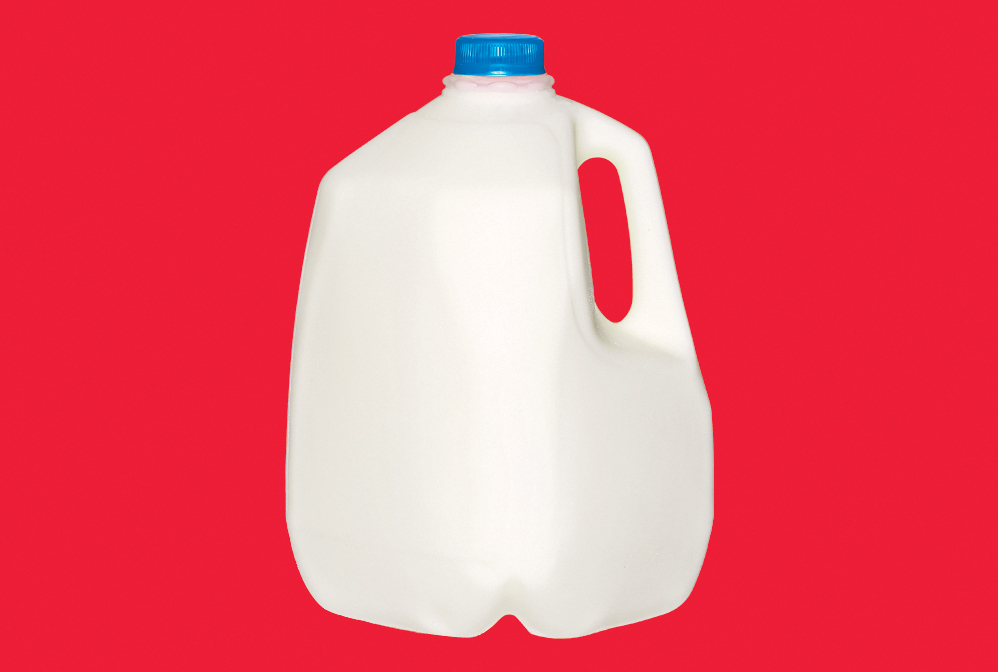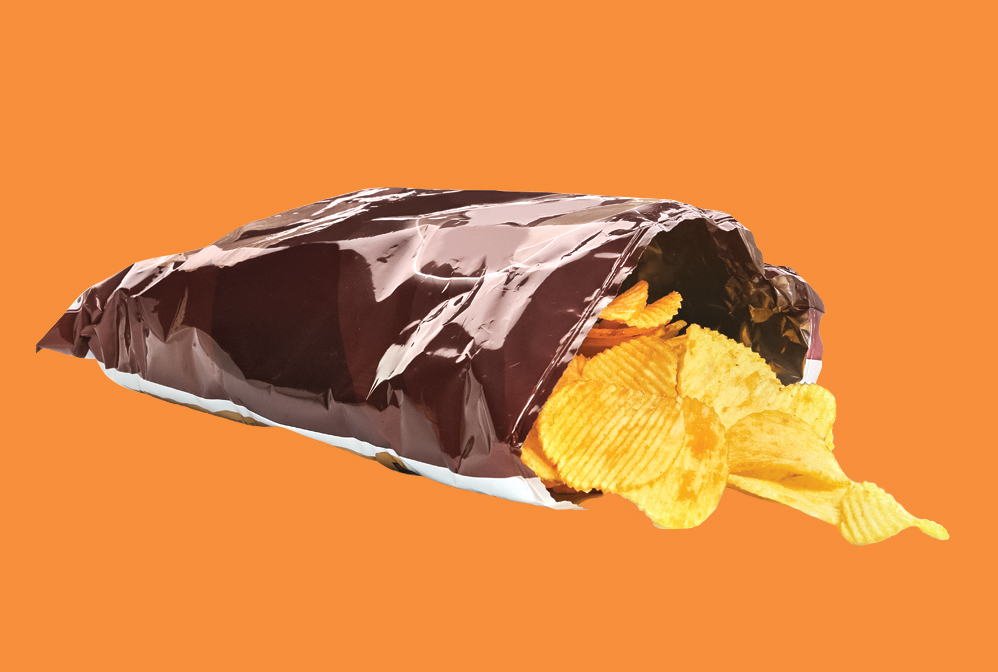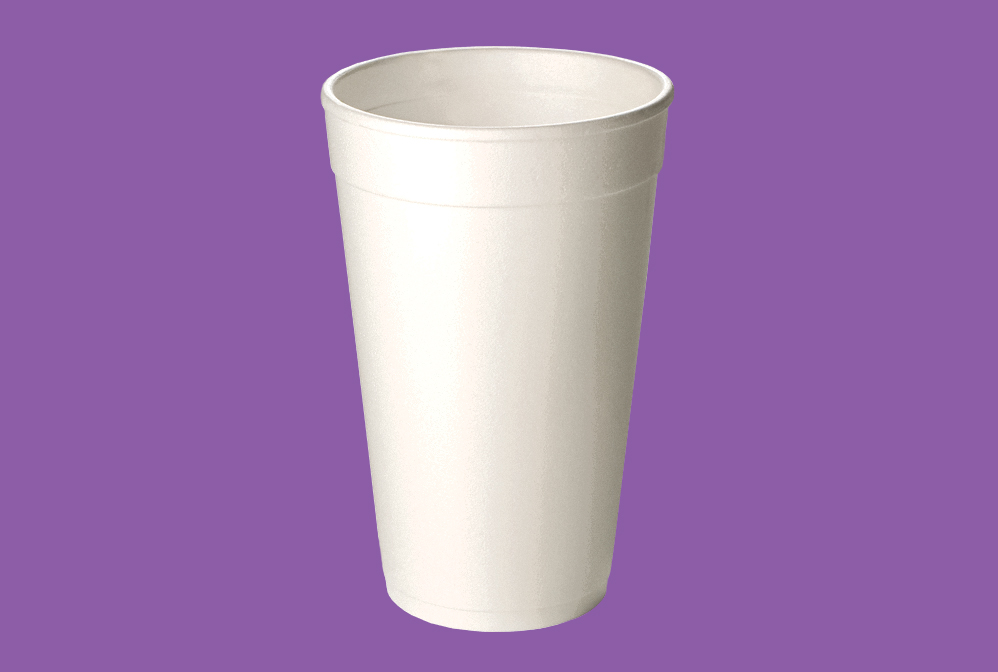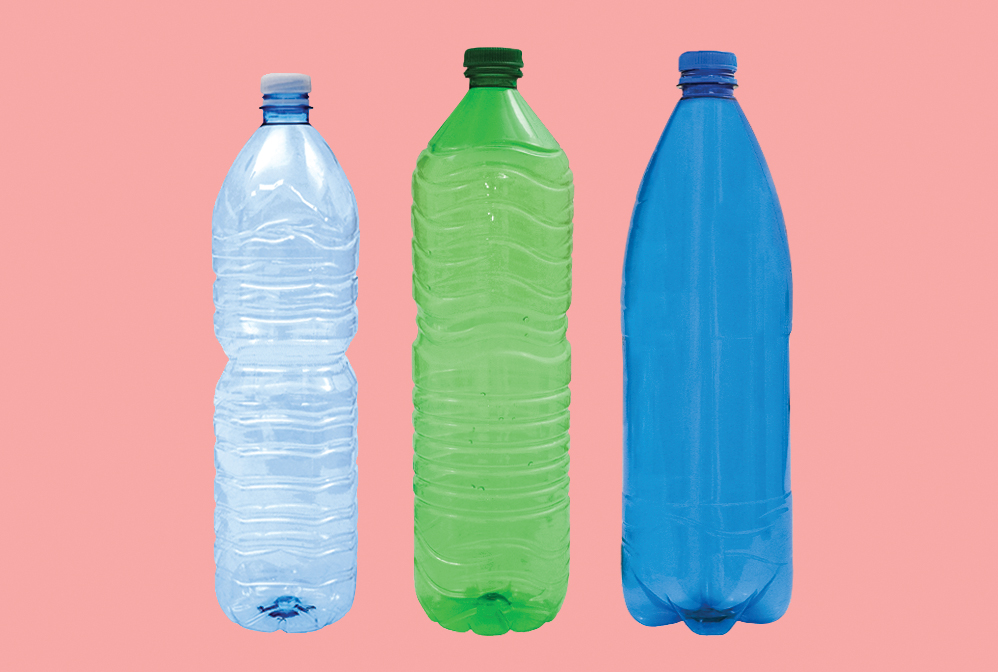Advertisement
Grab your lab coat. Let's get started
Welcome!
Welcome!
Create an account below to get 6 C&EN articles per month, receive newsletters and more - all free.
It seems this is your first time logging in online. Please enter the following information to continue.
As an ACS member you automatically get access to this site. All we need is few more details to create your reading experience.
Not you? Sign in with a different account.
Not you? Sign in with a different account.
ERROR 1
ERROR 1
ERROR 2
ERROR 2
ERROR 2
ERROR 2
ERROR 2
Password and Confirm password must match.
If you have an ACS member number, please enter it here so we can link this account to your membership. (optional)
ERROR 2
ACS values your privacy. By submitting your information, you are gaining access to C&EN and subscribing to our weekly newsletter. We use the information you provide to make your reading experience better, and we will never sell your data to third party members.

Polymers
The plastics takeover
Thanks to polymer chemistry, plastics make up an essential part of nearly everything we touch. These 7 polymers are woven into the fabric of our daily lives
by Alexander H. Tullo
August 11, 2023
| A version of this story appeared in
Volume 101, Issue 26

Credit: Shutterstock/C&EN
Polyethylene
ORIGIN: Hans von Pechmann, a chemist at the University of Tübingen, first observed polyethylene in the form of a fluffy white residue in 1898. In 1933, two chemists from Imperial Chemical Industries, Eric W. Fawcett and Reginald O. Gibson, touched off its commercial development by reacting ethylene under high pressure. The company opened the first commercial low-density polyethylene (LDPE) plant in 1939. Chemical companies soon created two other versions of the polymer: high-density polyethylene (HDPE) and linear low-density polyethylene (LLDPE).
USE: Polyethylene is the highest-volume plastic and the polymer we are most likely to encounter every day, usually in the form of packaging and other single-use plastics. HDPE, stiff and opaque, is used in milk jugs and detergent containers. LLDPE and LDPE are clearer and elastic. They are often used together in flexible films, such as stand-up pouches, rice bags, and garbage bags.
MARKET SIZE: 116.2 million metric tons
Source: Chemical Market Analytics by OPIS, a Dow Jones company.
DID YOU KNOW? In 1967, DuPont Canada introduced milk bags, made from LLDPE, in Ontario. They remain a quirk of Canadian milk commerce today.

Credit: Shutterstock/C&EN
Polypropylene
ORIGIN: J. Paul Hogan and Robert L. Banks of Phillips Petroleum first synthesized polypropylene in 1951. But it wasn’t until a US court ruling more than 30 years later that they were granted recognition for it. Giulio Natta, working with Italy’s Montecatini, had been widely given credit for the invention early on and is still considered instrumental in making polypropylene a practical polymer.
USE: Polypropylene is strong and light, resists fatigue, and holds up to high temperatures and chemical exposure. In the supermarket, you’ll find it in yogurt cups and soft-drink bottle caps, as well as potato chip bags, which are made of biaxially oriented polypropylene films. Polypropylene is also used to make automotive trim, structural brackets, and other durable goods.
MARKET SIZE: 82.9 million metric tons
Source: Chemical Market Analytics by OPIS, a Dow Jones company.
DID YOU KNOW? Its excellent fatigue resistance makes polypropylene the favored material for living hinges—the plastic bands that connect integrated parts with different functions, like the ones that bind to the snap on top of a shampoo bottle.

Credit: Shutterstock/C&EN
Polystyrene
ORIGIN: The Berlin apothecary Eduard Simon serendipitously created polystyrene in 1839 while experimenting with styrene extracted from the Turkish sweet gum tree. But it was a mere curiosity until 1920, when chemistry Nobel laureate Hermann Staudinger postulated its structure in formulating the macromolecule theory of polymers. The German chemical cartel IG Farben produced the first commercially significant quantities of polystyrene in 1931.
USE: General-purpose polystyrene is clear and hard but often brittle. It is found in packaging for cosmetics and other household goods, such as storage boxes for CDs. Modifying the polymer with polybutadiene rubber creates a tough and opaque high-impact version for applications like the interior linings of refrigerators. Arguably its most conspicuous form—expandable polystyrene—shows up as packing materials, clamshell containers, and of course, cups.
MARKET SIZE: 11.1 million metric tons
Source: Chemical Market Analytics by OPIS, a Dow Jones company.
DID YOU KNOW? Simon’s 1839 experiment was the first recorded incidence of polymerization, according to polymer chemist John Scheirs.

Credit: Shutterstock/C&EN
Polyvinyl chloride
ORIGIN: Chemists had synthesized and known about polyvinyl chloride (PVC) as far back as the 19th century. But it was too brittle to be of practical use as a plastic. Working for BF Goodrich in the 1920s, chemist Waldo L. Semon combined PVC with additives such as dibutyl phthalate to make it pliable.
USE: Creative formulation chemistry has made PVC one of the most versatile plastics. It is found in flexible products like shower curtains, rain parkas, and intravenous bags but also in rigid items like PVC pipes and vinyl records. Most PVC today is used in construction materials such as pipes, siding, windows, doors, and flooring.
MARKET SIZE: 47.1 million metric tons
Source: Chemical Market Analytics by OPIS, a Dow Jones company.
DID YOU KNOW? About 56% of PVC’s molecular weight comes from chlorine, extracted from brine via electrolysis.

Credit: Shutterstock/C&EN
Polycarbonate
ORIGIN: Alfred Einhorn, a chemist at the University of Munich, discovered the polycarbonate class of polymers in 1898. Two firms, Bayer and General Electric, independently invented the commercially dominant form of polycarbonate, made from bisphenol A, in 1953.
USE: One of the most important engineering polymers, polycarbonate is tough, stiff, transparent, and heat resistant. Its optical properties make it ideal for manufacturing CDs and DVDs. The material is also found in cell phone cases, football helmets, glazing for windows and partitions, and automotive headlamps.
MARKET SIZE: 4.8 million metric tons
Source: Chemical Market Analytics by OPIS, a Dow Jones company.
DID YOU KNOW? The visors worn by Apollo 11 astronauts were made of polycarbonate.

Credit: Shutterstock/C&EN
Polyethylene terephthalate
ORIGIN: DuPont’s Wallace H. Carothers and Julian W. Hill reported their aliphatic polyester polymers at an ACS meeting in 1931. But the resins were unstable in water and had relatively low melting points. About a decade later, influenced by this earlier work, John R. Whinfield and James T. Dickson of the Calico Printers Association reacted ethylene glycol and terephthalic acid together to create the aromatic polyester polyethylene terephthalate (PET).
USE: Polyester clothing, which had its heyday in the 1970s, is made of PET. The polymer is also used in photographic film and protective and decorative films, such as Mylar. But its most recognizable use today is in beverage bottles and food containers.
MARKET SIZE: 94.4 million metric tons (including fibers)
Source: Chemical Market Analytics by OPIS, a Dow Jones company.
DID YOU KNOW? PET has a recycling rate of 28.6% in the US, according to the National Association for PET Container Resources, making it the most recycled of the major plastics.

Credit: Shutterstock/C&EN
Nylon
ORIGIN: Wallace Carothers and research partner Julian W. Hill performed landmark work for DuPont on polyesters and polyamides in the 1930s. Of the polymers they created, one made by reacting adipic acid and hexamethylenediamine stood out as especially promising. In 1938, DuPont introduced nylon 6,6 commercially, and IG Farben chemist Paul Schlack first made nylon 6 from caprolactam.
USE: Nylon makes for a very durable fiber. It was quickly taken up for the manufacture of stockings and parachutes and today is found in textile goods including outdoor apparel, bags, swimwear, sleeping bags, and carpets. Because of its strength, heat resistance, and other attributes, nylon is the workhorse engineering polymer. It is widely used in automotive parts, especially in structural components found under the hood, and in other durable applications, such as housings for power tools.
MARKET SIZE: 8.7 million metric tons (including fibers)
Source: Chemical Market Analytics by OPIS, a Dow Jones company.
DID YOU KNOW? Before introducing nylon stockings in 1940, DuPont marketed nylon for toothbrush bristles.







Polyethylene

ORIGIN Hans von Pechmann, a chemist at the University of Tübingen, first observed polyethylene in the form of a fluffy white residue in 1898. In 1933, two chemists from Imperial Chemical Industries, Eric W. Fawcett and Reginald O. Gibson, touched off its commercial development by reacting ethylene under high pressure. The company opened the first commercial low-density polyethylene (LDPE) plant in 1939. Chemical companies soon created two other versions of the polymer: high-density polyethylene (HDPE) and linear low-density polyethylene (LLDPE).
USE Polyethylene is the highest-volume plastic and the polymer we are most likely to encounter every day, usually in the form of packaging and other single-use plastics. HDPE, stiff and opaque, is used in milk jugs and detergent containers. LLDPE and LDPE are clearer and elastic. They are often used together in flexible films, such as stand-up pouches, rice bags, and garbage bags.
MARKET SIZE 116.2 million metric tons
Source: Chemical Market Analytics by OPIS, a Dow Jones company.
DID YOU KNOW? In 1967, DuPont Canada introduced milk bags, made from LLDPE, in Ontario. They remain a quirk of Canadian milk commerce today.
Polypropylene

ORIGIN J. Paul Hogan and Robert L. Banks of Phillips Petroleum first synthesized polypropylene in 1951. But it wasn’t until a US court ruling more than 30 years later that they were granted recognition for it. Giulio Natta, working with Italy’s Montecatini, had been widely given credit for the invention early on and is still considered instrumental in making polypropylene a practical polymer.
USE Polypropylene is strong and light, resists fatigue, and holds up to high temperatures and chemical exposure. In the supermarket, you’ll find it in yogurt cups and soft-drink bottle caps, as well as potato chip bags, which are made of biaxially oriented polypropylene films. Polypropylene is also used to make automotive trim, structural brackets, and other durable goods.
MARKET SIZE 82.9 million metric tons
Source: Chemical Market Analytics by OPIS, a Dow Jones company.
DID YOU KNOW? Its excellent fatigue resistance makes polypropylene the favored material for living hinges—the plastic bands that connect integrated parts with different functions, like the ones that bind to the snap on top of a shampoo bottle.
Polystyrene

ORIGIN The Berlin apothecary Eduard Simon serendipitously created polystyrene in 1839 while experimenting with styrene extracted from the Turkish sweet gum tree. But it was a mere curiosity until 1920, when chemistry Nobel laureate Hermann Staudinger postulated its structure in formulating the macromolecule theory of polymers. The German chemical cartel IG Farben produced the first commercially significant quantities of polystyrene in 1931.
USE General-purpose polystyrene is clear and hard but often brittle. It is found in packaging for cosmetics and other household goods, such as storage boxes for CDs. Modifying the polymer with polybutadiene rubber creates a tough and opaque high-impact version for applications like the interior linings of refrigerators. Arguably its most conspicuous form—expandable polystyrene—shows up as packing materials, clamshell containers, and of course, cups.
MARKET SIZE 11.1 million metric tons
Source: Chemical Market Analytics by OPIS, a Dow Jones company.
DID YOU KNOW? Simon’s 1839 experiment was the first recorded incidence of polymerization, according to polymer chemist John Scheirs.
Polyvinyl chloride

ORIGIN Chemists had synthesized and known about polyvinyl chloride (PVC) as far back as the 19th century. But it was too brittle to be of practical use as a plastic. Working for BF Goodrich in the 1920s, chemist Waldo L. Semon combined PVC with additives such as dibutyl phthalate to make it pliable.
USE Creative formulation chemistry has made PVC one of the most versatile plastics. It is found in flexible products like shower curtains, rain parkas, and intravenous bags but also in rigid items like PVC pipes and vinyl records. Most PVC today is used in construction materials such as pipes, siding, windows, doors, and flooring.
MARKET SIZEMarket size 47.1 million metric tons
Source: Chemical Market Analytics by OPIS, a Dow Jones company.
DID YOU KNOW? About 56% of PVC’s molecular weight comes from chlorine, extracted from brine via electrolysis.
Polycarbonate

ORIGIN Alfred Einhorn, a chemist at the University of Munich, discovered the polycarbonate class of polymers in 1898. Two firms, Bayer and General Electric, independently invented the commercially dominant form of polycarbonate, made from bisphenol A, in 1953.
USE One of the most important engineering polymers, polycarbonate is tough, stiff, transparent, and heat resistant. Its optical properties make it ideal for manufacturing CDs and DVDs. The material is also found in cell phone cases, football helmets, glazing for windows and partitions, and automotive headlamps.
MARKET SIZE 4.8 million metric tons
Source: Chemical Market Analytics by OPIS, a Dow Jones company.
DID YOU KNOW? The visors worn by Apollo 11 astronauts were made of polycarbonate.
Polyethylene terephthalate

ORIGIN DuPont’s Wallace H. Carothers and Julian W. Hill reported their aliphatic polyester polymers at an ACS meeting in 1931. But the resins were unstable in water and had relatively low melting points. About a decade later, influenced by this earlier work, John R. Whinfield and James T. Dickson of the Calico Printers Association reacted ethylene glycol and terephthalic acid together to create the aromatic polyester polyethylene terephthalate (PET).
USE Polyester clothing, which had its heyday in the 1970s, is made of PET. The polymer is also used in photographic film and protective and decorative films, such as Mylar. But its most recognizable use today is in beverage bottles and food containers.
MARKET SIZE 94.4 million metric tons (including fibers)
Source: Chemical Market Analytics by OPIS, a Dow Jones company.
DID YOU KNOW? PET has a recycling rate of 28.6% in the US, according to the National Association for PET Container Resources, making it the most recycled of the major plastics.
Nylon

ORIGIN Wallace Carothers and research partner Julian W. Hill performed landmark work for DuPont on polyesters and polyamides in the 1930s. Of the polymers they created, one made by reacting adipic acid and hexamethylenediamine stood out as especially promising. In 1938, DuPont introduced nylon 6,6 commercially, and IG Farben chemist Paul Schlack first made nylon 6 from caprolactam.
USE Nylon makes for a very durable fiber. It was quickly taken up for the manufacture of stockings and parachutes and today is found in textile goods including outdoor apparel, bags, swimwear, sleeping bags, and carpets. Because of its strength, heat resistance, and other attributes, nylon is the workhorse engineering polymer. It is widely used in automotive parts, especially in structural components found under the hood, and in other durable applications, such as housings for power tools.
MARKET SIZE 8.7 million metric tons (including fibers)
Source: Chemical Market Analytics by OPIS, a Dow Jones company.
DID YOU KNOW? Before introducing nylon stockings in 1940, DuPont marketed nylon for toothbrush bristles.


Join the conversation
Contact the reporter
Submit a Letter to the Editor for publication
Engage with us on Twitter